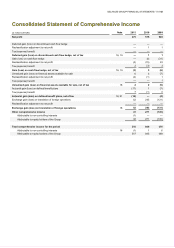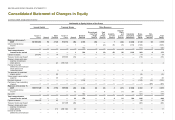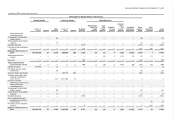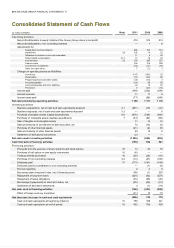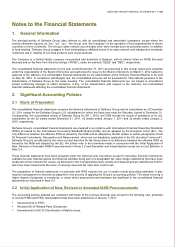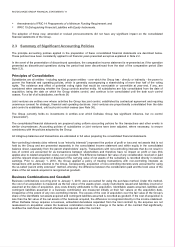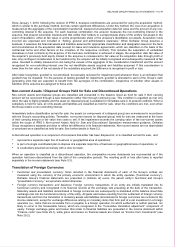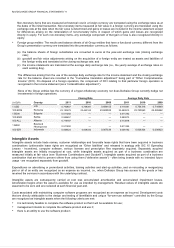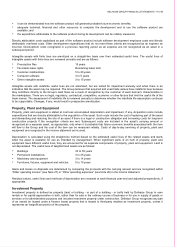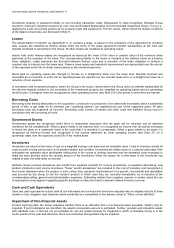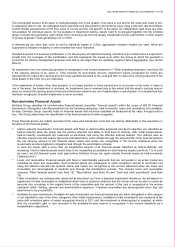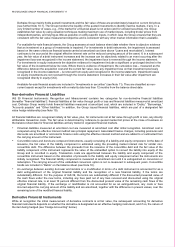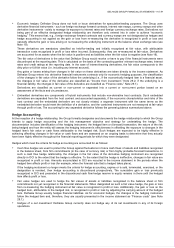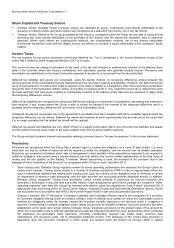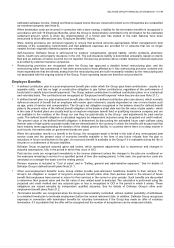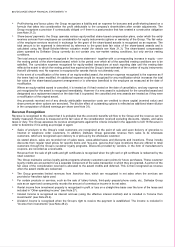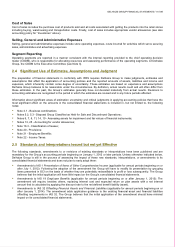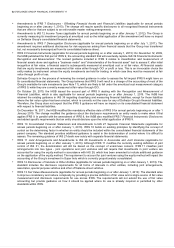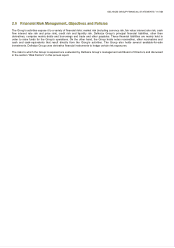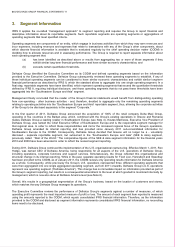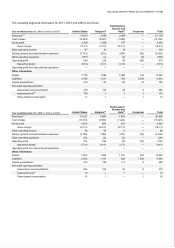Food Lion 2011 Annual Report Download - page 77
Download and view the complete annual report
Please find page 77 of the 2011 Food Lion annual report below. You can navigate through the pages in the report by either clicking on the pages listed below, or by using the keyword search tool below to find specific information within the annual report.
DELHAIZE GROUP FINANCIAL STATEMENTS ’11 // 75
The recoverable amount of an asset or cash-generating unit is the greater of its value in use and its fair value less costs to sell.
In assessing value in use, the estimated future cash flows are discounted to their present value using a discount rate that reflects
current market assessments of the time value of money and the risk specific to the asset. As independent cash flows are often
not available for individual assets, for the purpose of impairment testing, assets need to be grouped together into the smallest
group of assets that generates cash inflows from continuing use that are largely independent of the cash inflows of other assets
or groups of assets (“cash generating unit” or CGU).
In determining fair value less costs to sell for individual assets or CGUs, appropriate valuation models are used, which are
supported by valuation multiples or other available fair value indicators.
Goodwill acquired in a business combination is, for the purpose of impairment testing, allocated to the CGUs that are expected to
benefit from the synergies of the combination and that represents the lowest level within the Group at which the goodwill is
monitored for internal management purposes and that is not larger than an operating segment before aggregation (see further
Note 6).
An impairment loss of a continuing operation is recognized in the income statement in "Other operating expenses" (see Note 28)
if the carrying amount of an asset or CGU exceeds its recoverable amount. Impairment losses recognized for CGUs are
allocated first to reduce the carrying amount of any goodwill allocated to the units and then to reduce the carrying amounts of the
other assets in the CGU on a pro rata basis.
If the impairment of assets, other than goodwill, is no longer justified in future periods due to a recovery in fair value or value in
use of the asset, the impairment is reversed. An impairment loss is reversed only to the extent that the asset’s carrying amount
does not exceed the carrying amount that would have been determined, net of depreciation or amortization, if no impairment loss
had been recognized. Goodwill impairment is never reversed.
Non-derivative Financial Assets
Delhaize Group classifies its non-derivative financial assets (hereafter “financial assets”) within the scope of IAS 39 Financial
Instruments: Recognition and Measurement into the following categories: held-to-maturity, loans and receivables and available-
for-sale. Delhaize Group currently holds no financial assets that would be classified as measured at fair value through profit or
loss. The Group determines the classification of its financial assets at initial recognition.
These financial assets are initially recorded at fair value plus transaction costs that are directly attributable to the acquisition or
issuance of the financial assets.
• Held-to-maturity investments: Financial assets with fixed or determinable payments and fixed maturities are classified as
held-to-maturity when the Group has the positive intention and ability to hold them to maturity. After initial measurement,
held-to-maturity investments are measured at amortized cost using the effective interest method. This method uses an
effective interest rate that exactly discounts estimated future cash receipts through the expected life of the financial asset to
the net carrying amount of the financial asset. Gains and losses are recognized in the income statement when the
investments are derecognized or impaired, and through the amortization process.
In case the Group sells a more than an insignificant amount of its financial assets classified as held-to-maturity, any
remaining held-to-maturity assets would have to be reclassified as available-for-sale financial assets (see Note 11). In such
an event, two full financial years must pass before Delhaize Group can again classify financial assets as held-to-maturity
(“tainting rules”).
• Loans and receivables: Financial assets with fixed or determinable payments that are not quoted in an active market are
classified as loans and receivables. Such financial assets are subsequent to initial recognition carried at amortized cost
using the effective interest rate method. Gains and losses are recognized in the income statement when the loans and
receivables are derecognized or impaired and through the amortization process. The Group’s loans and receivables
comprise “Other financial assets” (see Note 12), “Receivables” (see Note 14) and “Cash and cash equivalents” (see Note
15).
Trade receivables are subsequently measured at amortized cost less a separate impairment allowance. An allowance for
impairment of trade receivables is established when there is objective evidence that the Group will not be able to collect all
amounts due according to the original terms of the receivables and the amount of the loss is recognized in the income
statement within “Selling, general and administrative expenses.” Impaired receivables are derecognized when they are
determined to be uncollectible.
• Available-for-sale investments: Available-for-sale investments are financial assets that are either designated in this category
or not classified in any of the other categories. After initial measurement, available-for-sale investments are measured at fair
value with unrealized gains or losses recognized directly in OCI, until the investment is derecognized or impaired, at which
time the cumulative gain or loss recorded in the available-for-sale reserve is recognized in the income statement as a
reclassification adjustment.


